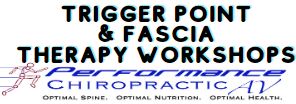 At the moment your chiropractor corrects your subluxations, thousands, if not millions, of body functions and activities are affected. The flow of nerve impulses over your brain, spinal cord and spinal (and other) nerves connecting to your internal organs and tissues is more balanced and your body begins to restore, renew and rebuild itself.
At the moment your chiropractor corrects your subluxations, thousands, if not millions, of body functions and activities are affected. The flow of nerve impulses over your brain, spinal cord and spinal (and other) nerves connecting to your internal organs and tissues is more balanced and your body begins to restore, renew and rebuild itself.
Peace & Relaxation
Chiropractic affects more than physical well-being. Many patients have reported a feeling of deepening peace and relaxation after an adjustment. Some have described a warm feeling flowing to various parts of their bodies that’s very soothing. Some have reported feeling lighter or more open, and many report feeling very relaxed or energetic, or both!
Most chiropractic patients find that the problems that brought them to their chiropractor soon begin to lessen after their first few visits although some people feel no difference after initial adjustments. This does not necessarily mean that they are not receiving any benefit; healing may be occurring under the surface. Occasionally a person may initially feel muscle soreness or some other uncomfortable feeling after an adjustment.
What Causes These Reactions?
- You are experiencing a detoxification or cleansing of your body after the adjustment. It’s especially good to drink a lot of water after your adjustment.
- Weak, underused muscles may be working to realign your spine and structural system; they may become sore or “charley horse” for a brief period.
- Old injuries that haven’t healed completely may “reawaken” for more complete healing. Memories and feelings associated with the original injury may also come to the surface. This phenomenon is known as “retracing” and is a part of the healing process. Retracing may not only surface as a conscious memory—old energy may release in dreams. Chiropractic patients have at times noticed that their dreams are unusual, intense or revealing after a chiropractic adjustment.
- Some people are in such good general health that they may feel no difference, while others may feel no difference for the opposite reason—they are so ill or toxic that they have lost sensitivity to their body.
 As You Continue Your Care …
As You Continue Your Care …
As you continue your chiropractic care and your structural and nervous systems continue to release deep stresses you may begin to notice:
- Better balance, smoother movement and more energy.
- Increased awareness of your entire body and where you tend to keep your stress.
- Increased ability to breathe more deeply and fully.
- More emotional relaxation; you don’t react so strongly to situations that earlier would have upset you.
- You may spontaneously change your eating habits, feel an increased desire to exercise, go for walks or find more ways to relax.
The Most Important Benefits
The true benefits of the adjustment are usually found below the level of consciousness. It is when the nerve communication to the heart, lungs, joints, sexual organs, skin, eyes, ears and the brain itself is improved that the true benefits of chiropractic are experienced.
Will you feel a dramatic improvement right away? Many people do, but for some it takes time. That’s because long-standing subluxations cause scar tissue or fibrosis to build up around your joints, discs and bones. This scar tissue can take months or years to fully break down. For that reason you must be patient with chiropractic care, and the wait will be worth it.
Quality Of Life
Studies have revealed that people under chiropractic care may experience wellness in many areas of their lives. Chiropractic patients in two studies reported improved physical and mental/emotional health, better ability to deal with stress and more life enjoyment.1-2 In other studies patients reported improved physical and general health, less bodily pain, greater vitality as well as better social functioning and mental health.3-4
In addition, improvement in conditions as varied as depression,5 autism,6 high blood pressure,7 pregnancy problems8 and attention deficit and hyperactivity disorder9 have been noted. Chiropractic has been especially effective with improving the lives of the elderly. In one study of people 75 years of age and older, those under chiropractic care enjoyed better overall health, fewer chronic conditions, less days in nursing homes and hospitals, more mobility and were less likely to use prescription drugs than non-chiropractic patients. Overall 87% of chiropractic patients described their health as excellent compared to just 67.8% of non-chiropractic patients.10
What Can YOU Expect?
Chiropractic care is individualized; the care you receive will be unique for your body and needs and the benefits you receive will be unique for you. Be sensitive to your body and communicate with your chiropractor—let him or her know exactly what changes you may be experiencing after your adjustment.
References
- Marino MJ, Phillippa ML. A longitudinal assessment of chiropractic care using a survey of self-rated health wellness & quality of life: a preliminary study. JVSR. 1999;3(2):1-9.
2. Blanks RHI, Schuster TL. A retrospective assessment of network care using a survey of self-rated health, wellness and quality of life. JVSR. 1997;1(4):1.
3. Owens EF, Hoiriis KT, Burd D. Changes in general health status during upper cervical chiropractic care: PBR report. Chiropractic Research Journal. 1998;5(1):9-16.
4. Pauli Y. Quality of life improvements and spontaneous lifestyle changes in a patient undergoing subluxation-centered chiropractic care: a case study. JVSR. October 11, 2006;1-15.
5. Desaulniers AMJ. Effect of subluxation-based chiropractic care on quality of life in a patient with major depression. JVSR. April 23, 2008;1-7.
6. Hoffman N, Russell D. Improvement in a 32-year-old autistic child following chiropractic intervention to reduce vertebral subluxation. JVSR. March 24, 2008;1-4.
7. Bakris G, Dickholtz M, Meyer PM et al. Atlas vertebra realignment and achievement of arterial pressure goal in hypertensive patients: a pilot study. Journal of Human Hypertension. 2007;21:347–352.
8. Alcantara J, Hamel I. The chiropractic care of a gravid patient with a history of multiple caesarean births & sacral subluxation. JVSR. March 11, 2008;1-5.
9. Lovett L, Blum CL. Behavioral and learning changes secondary to chiropractic care to reduce subluxations in a child with attention deficit hyperactivity disorder: a case study. JVSR. October 4, 2006;1-6.
10. Study associates chiropractic with better health in the elderly. Today’s Chiropractic. November/December 1996. Originally published by the Foundation for Chiropractic Education and Research.




FOLLOW US!